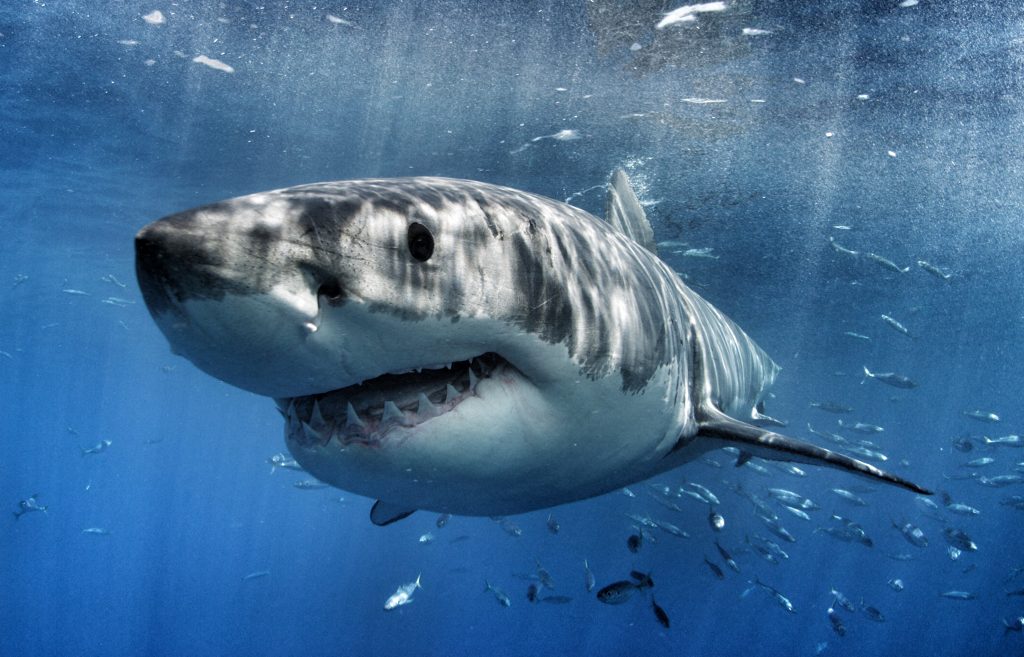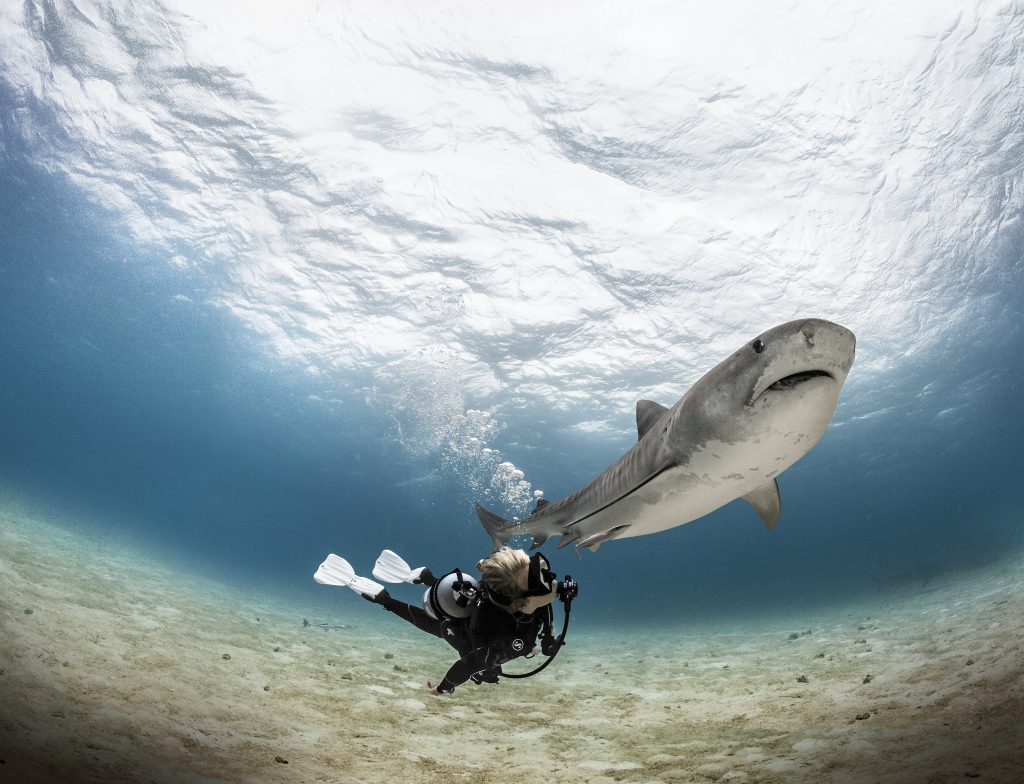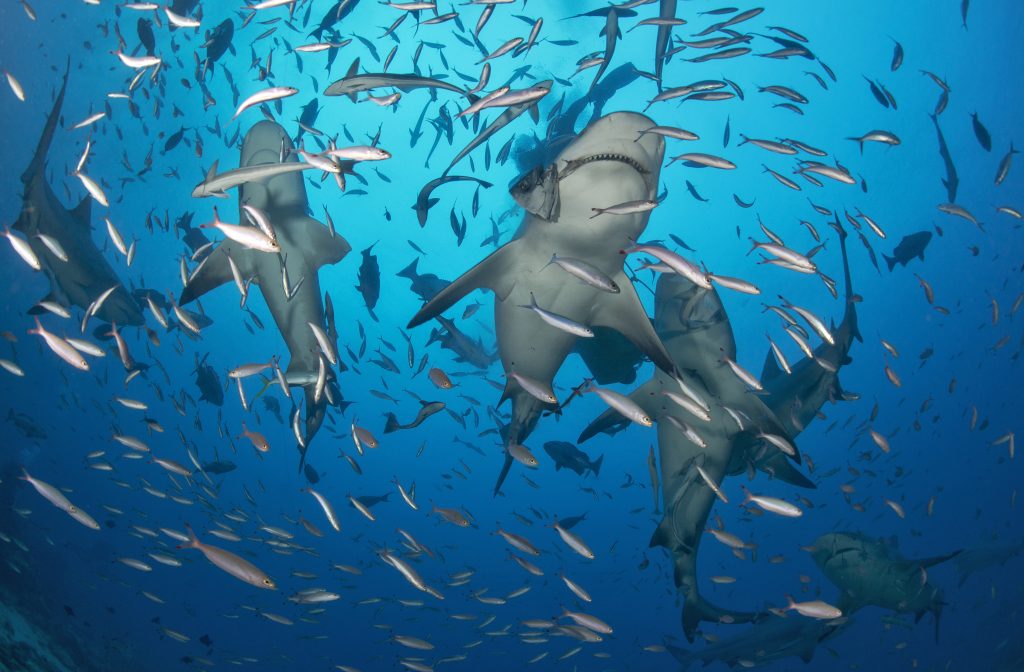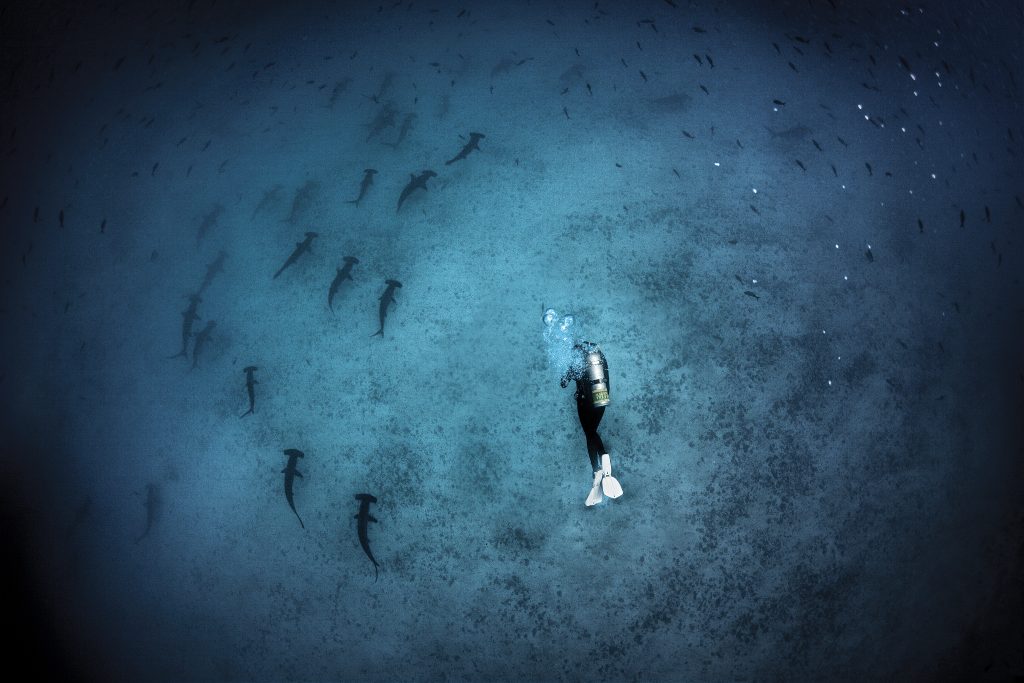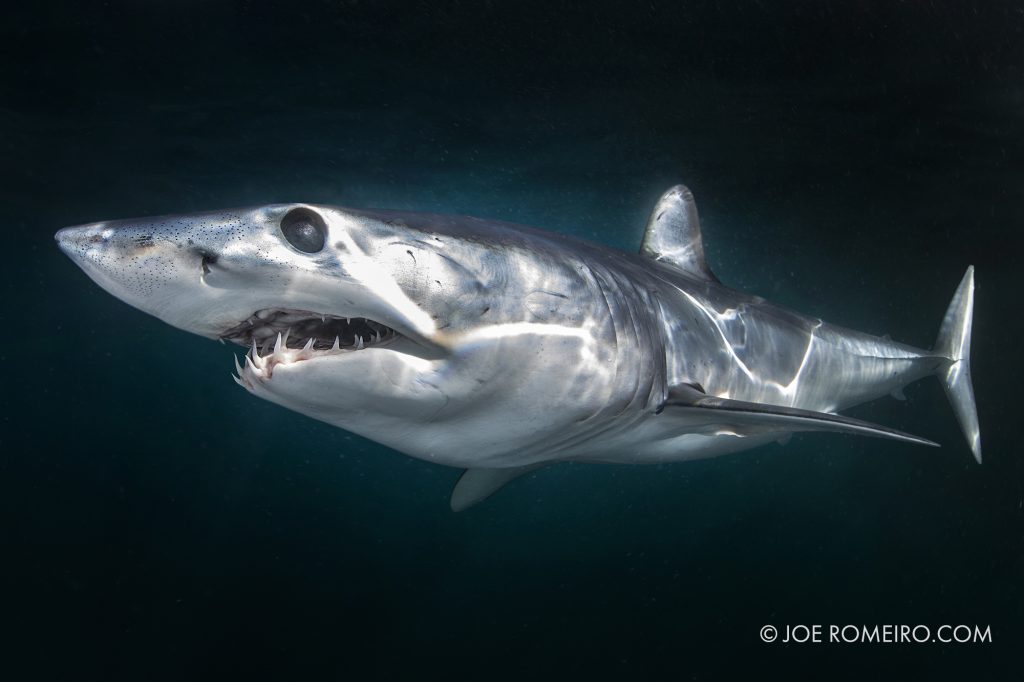Marine Life & Conservation Blogs
For PADI divers, every week is Shark Week!
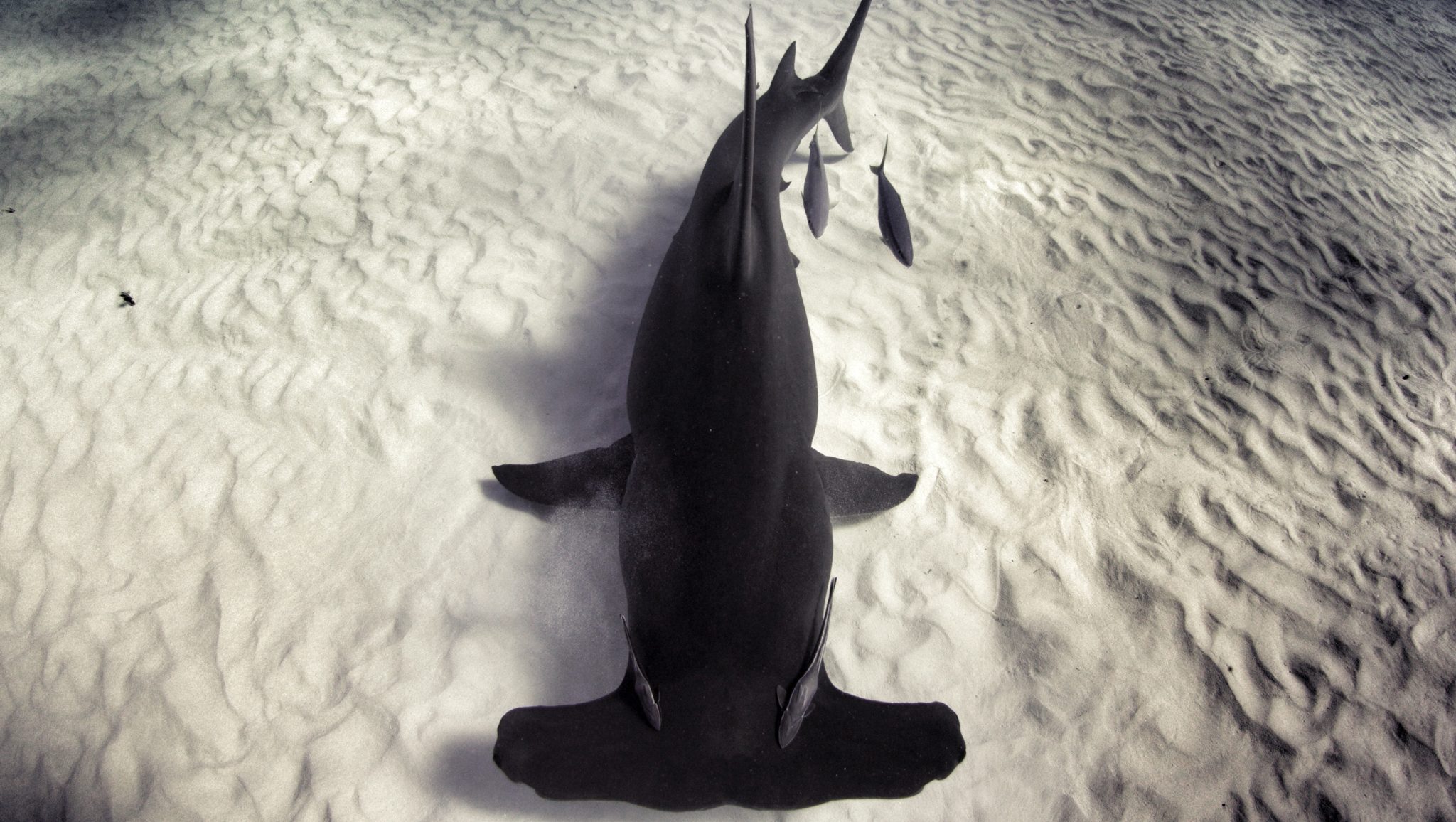
Some of our favorite places to have epic interactions with the stars of Shark Week – dive certification not always required!
We’ve been all around the world diving with sharks from the smallest shy shark to the giant whale shark. Here’s some of the best places in the world to swim, snorkel and dive with the iconic and most popular stars of Shark Week – including Whites, Bulls, Tigers, Great Hammerheads, and Mako Sharks – while shifting your perspective at the same time!
Great White Sharks – Guadalupe Island, Mexico
PADI Diving Certification required: None
Other Shark Species You’ll encounter: None (they don’t want to end up on the White Shark’s menu!)
Want to have the same experience people like PADI Diver Andy Casagrande film for Discovery’s Shark Week? Head to a remote archipelago off the coast of Baja.
Guadalupe Island is off the coast of Mexico and is absolutely epic for experiencing white sharks doing what they do best. This small volcanic island is located 150 miles off the west coast of Mexico and is home to approximately 170 great white sharks from July to November.
The water is crystal clear, topside conditions are usually great – and the action is incredible, and highly reliable. While we are dealing with wild animals that make their own itineraries, it isn’t unusual to see 20 – 30 different animals on a trip!
The island’s shores are havens for Guadalupe Fur Seals, Californian Sea Lions and Northern Elephant Seals. It also brings in incredible amounts of pelagic fish species like tuna. It’s a 24-hour diner filled with white sharks’ favorite food from late July through the end of each year.
Some of the biggest sharks in the world have been tagged in Guadalupe including “Deep Blue”. The action at the surface can be busy with the huge females hunting large elephant seals and from the in-water cages, it’s incredible to witness the social structures and the interaction between sharks.
Many operators serving Guadalupe Island offer the unique experience of liveaboard diving with great whites. While it may not be the easiest place to reach, thanks to the large population of migrating sharks and clarity of the water, this is a great choice for a great white shark encounter.
And you don’t need to be a certified diver! You’ll have surface supplied air and plenty of time in cages built for your – and the sharks’ safety.
Choose from 7 PADI Liveaboards in Guadalupe Island
Other White Shark Hotspots:
- Port Lincoln – Australia
- Gansbaii + False Bay, South Africa
- Farrallon Islands, California
- South Island, New Zealand
Tiger Sharks – “Tiger Beach”, Bahamas
PADI Diving Certification required: Open Water Diver or Freediver
Other Shark Species You’ll Encounter: lemon sharks, reef sharks, nurse sharks and the occasional great hammerhead
Named because of their unique stripes and impressive hunting style, tiger sharks can be found in tropical and sub-tropical regions around the globe. These beautiful marine animals can reach up to 5 meters/16 feet in length and can weigh up to 635 kg/1,400 lb.
Tiger sharks have gotten a bad reputation on Shark Week as being indiscriminate eaters (yes, it’s true a suit of armor and an unexploded grenade have been found in the stomachs of this species) – and dangerous sharks. However, swimming with one – whether snorkeling, freediving or diving is a life-changing experience. You’ll quickly realize that you are having an adventure of a lifetime as the fear melts away. And there is really no place on earth like this place off the coast of the Bahamas – that exists only below the surface.
About an hour by boat from the West End of Grand Bahama, Tiger Beach is famous and aptly named for its resident tiger sharks. Two to seventeen of these gorgeous animals reliably appear nearly every day of the year. Tiger Beach offers the chance to take part in some of the greatest shark diving in the world. You’ll get up-close encounters with not only tiger sharks but lemon sharks, the occasional hammerhead and plenty of whitetip reef sharks in the crystal-clear azure waters that only an aquarium can top in terms of visibility.
The best time to dive Tiger Beach is between October and January when the sharks use the area as a breeding ground. Shark Week has featured some of the residents being tagged or even giving birth – and hopefully you’ll even meet Emma, the world’s most famous Tiger Shark.
From Bimini or Grand Bahamas, you can head to the most spectacular tiger shark gatherings in the world by a day boat – or you can take a trip on a liveaboard departing from Southern Florida or the Bahamas. The easy surface conditions, 20-foot depth and gorgeous light make Tiger Beach accessible for freedivers and scuba divers alike.
View Dive Operators in the Bahamas
Other Tiger Shark Hotspots:
- Beqa Lagoon- Fiji
- Hawaii
- Aliwal Shoal – South Africa
- South Carolina – USA
Bull Sharks – Shark Reef, Fiji
PADI Diving Certification required: Advanced Open Water Diver
Other Shark Species You’ll Encounter: tiger sharks, gray reef sharks, nurse sharks, black tip reef sharks, silvertip sharks
Part of many different Shark Week episodes, bull sharks are well known sharks for many reasons – including a reputation for brutish behavior (which earns them their name) as well as the fact they are one of the most adaptable species of all sharks. They can survive in both salt and fresh water and can be found in most coastlines throughout the world. Although they’re portrayed as one of the more aggressive sharks on shark week, they are incredible creatures to see underwater and shouldn’t be missed. And there’s literally no better place to dive with bull sharks than Fiji – where you’ll find the biggest bull sharks in large numbers.
With the establishment of the Shark Reef Marine Reserve, Beqa Lagoon has become a premier shark diving area the world over. Bull sharks are the stars of the show here, but divers can encounter up to 7 other species as well. These include sickle lemons, gray reefs, nurse, blacktip reefs, whitetip reefs, silvertips and tiger sharks. With more than 20 dive sites in the lagoon, divers can fill a week or more with fantastic shark sightings. Although you will see sharks during any month of the year, July to September offer the best diving conditions in terms of visibility, water temperature and other large marine life.
As an added bonus, any diving done in the Shark Reef Marine Reserve finances shark research and compensates local fishermen for lost income due to the creation of no-take zones. It’s a win-win-win for sharks, divers and the local population!
A recent study in Fiji found that bull sharks form friendships with each other! Researchers studied data collected over 3,000 shark dives in Fiji’s Shark Reef Marine Reserve (SRMR), one of the world’s most sought-after diving destinations. SRMR is located in the Beqa Channel, off the southern coast of Viti Levu, and is a striking example of collaboration for conservation.
The shark is revered by local Fijians and legend has it that Dakuwaqa, the ancient shark god, provides protection for the people when at sea. So not only will you be exploring Fiji’s underwater world with your dive buddy, but you will likely encounter a pair of bull shark BFFs on your dive too!
View Dive Resorts in Beqa Lagoon
Other Bull Shark Hotspots:
- Bimini, Bahamas
- Playa del Carmem, Mexico
- West Palm Beach and Jupiter,Florida
- Protea Banks, South Africa
Great Hammerhead Sharks – Bimini, Bahamas
PADI Diving Certification required: Open Water Diver or Freediver
Other Shark Species You’ll Encounter: bull sharks, lemon sharks, reef sharks, nurse sharks and don’t forget the shark’s close cousin… the eagle ray
Bahamas makes it on our list twice thanks to the incredible conditions underwater (there’s actually a color named Bimini Blue), and the fact the Bahamas plays hosts to some of the most spectacular mega-fauna in the world – including the Great Hammerhead Shark.
There’s no mystery as to how the hammerhead shark got its name! That massive hammer – known as a cephalfoil – makes them one of the most distinctive animals on the planet. And that hammer isn’t just for show… It gives this shark superpowers which means the great hammerheads have seven finely attuned senses plus 360-degree vision (without turning their head!) to be able to avoid divers. Seeing a great hammerhead is rare as they tend to be quite skittish underwater, so finding a place you can reliably experience them is a rarity.
Every winter from December to March, great hammerhead Sharks gather around Bimini in large numbers. Naturally shy and reserved, these huge sharks with their odd faces become curious in this location, closely approaching divers. Shark diving is closely controlled due to the area’s marine park status. Although Bimini Island is a part of the Bahamas, it is located just 50 miles from Miami in the United States, making it possible to visit by boat in just three hours from the American city.
The waters of Bimini are warm, clear and typically protected. The shark dives occur in less than 20 feet of water allowing divers and freedivers to enjoy incredible encounters.
Plan a trip to Bimini to see the “hammers” and you’ll likely catch up with bull sharks, friendly dolphin pods, and graceful schools of eagle rays. You’ll feel like you stepped back in time to an island still not heavily commercially developed and traversed by golf carts. Bimini can be explored by divers and snorkelers alike – and is absolutely stunning above and below the surface. Head to nearby Honeymoon Beach to swim with the local group of rays as well – after all, rays are really just flat sharks!
Other Great Hammerhead Hotspots:
- Southern Florida, USA
- Rangiroa, French Polynesia
- Solomon Islands
Shortfin Mako Sharks – Rhode Island, USA
PADI Diving Certification required: None
Other Shark Species You’ll Encounter: blue sharks
Mako sharks get nearly as much airtime on Shark Week as white sharks, thanks to their incredible biology, although the fact they are in the same shark family as whites (mackerel) probably doesn’t hurt!
Shortfin mako sharks are sometimes described as miniature great whites on amphetamines. These toothy sharks look like a shrunken-down version of the ocean’s top predators, but they act totally differently. While great white sharks slice slow, graceful circles around a diver, watching with an inquisitive eye, makos are twitchy sharks, hopped up on adrenaline, that speed past you.
Thought to be the fastest sharks in the ocean, makos have an estimated top speed burst of about 45 mph. They can achieve these speeds thanks, in part, to their ability to thermoregulate – meaning they can warm their body temperatures. Incredible acrobats, like great whites, makos are known to jump out of the water, sometimes up to 20 feet in the air, using their perfectly shaped fins as wings and rudders.
Equally impressive, they have the largest brain to body mass of any study shark as well. So they have it all – beauty, brains and braun.
Makos are pelagic sharks that live throughout the world’s oceans, but there are only a handful of places where you can have reliable encounters with these incredible creatures. Our favorite, most reliable place? Rhode Island. Plus, you don’t even have to be a diver!
Most people don’t think of Rhode Island as a shark-diving hot spot, but during the summer months, when the Gulf Stream moves close to shore, this stretch of New England coastline becomes a haven for makos and other sharks, as game fish move closer to shore. You can even join PADI divers, PADI AWARE supporters and Shark Week celebrities Joe and Lauren Romiero as they film and study the local mako population on their dive charter.
Even if you miss the stars, the equally charismatic blue sharks steal the show.
Other Mako Hotspots:
- Baja Sur, Mexico
- Cape Point, South Africa
- San Diego, California
- Azores
Header Image Credit: Andy Casagrande @ABC4EXPLORE
Blogs
Invitation from The Ocean Cleanup for San Francisco port call

6 years ago, The Ocean Cleanup set sail for the Great Pacific Garbage Patch with one goal: to develop the technology to be able to relegate the patch to the history books. On 6 September 2024, The Ocean Cleanup fleet returns to San Francisco bringing with it System 03 to announce the next phase of the cleanup of the Great Pacific Garbage Patch and to offer you a chance to view our cleanup system up-close and personal.
We look forward to seeing you there.
To confirm your presence, please RSVP to press@theoceancleanup.com
PROGRAM
Join The Ocean Cleanup as our two iconic ships and the extraction System 03 return to San Francisco, 6 years and over 100 extractions after we set sail, to create and validate the technology needed to rid the oceans of plastic.
Our founder and CEO, Boyan Slat, will announce the next steps for the cleanup of the Great Pacific Garbage Patch. Giving you a chance to view our cleanup system and the plastic extracted.
Hear important news on what’s next in the mission of The Ocean Cleanup as it seeks to make its mission of ridding the world’s oceans of plastic an achievable and realistic goal.
Interviews and vessel tours are available on request.
PRACTICALITIES
Date: September 6, 2024
Press conference: 12 pm (noon)
Location: The Exploratorium (Google Maps)
Pier 15 (Embarcadero at Green Street), San Francisco, CA
Parking: Visit The Exploratorium’s website for details.
RSVP: press@theoceancleanup.com
Video & photo material from several viewing spots around the bay
We look forward to seeing you there!
ABOUT THE OCEAN CLEANUP
The Ocean Cleanup is an international non-profit that develops and scales technologies to rid the world’s oceans of plastic. They aim to achieve this goal through a dual strategy: intercepting in rivers to stop the flow and cleaning up what has already accumulated in the ocean. For the latter, The Ocean Cleanup develops and deploys large-scale systems to efficiently concentrate the plastic for periodic removal. This plastic is tracked and traced to certify claims of origin when recycling it into new products. To curb the tide via rivers, The Ocean Cleanup has developed Interceptor™ Solutions to halt and extract riverine plastic before it reaches the ocean. As of June 2024, the non-profit has collected over 12 million kilograms (26.4 million pounds) of plastic from aquatic ecosystems around the world. Founded in 2013 by Boyan Slat, The Ocean Cleanup now employs a broadly multi-disciplined team of approximately 140. The foundation is headquartered in Rotterdam, the Netherlands, and opened its first regional office in Kuala Lumpur, Malaysia, in 2023.
Find out more about The Ocean Cleanup at www.theoceancleanup.com.
Blogs
Smart Shark Diving: The Importance of Awareness Below the Surface

By: Wael Bakr
Introduction to Shark Diving Awareness
In the realm of marine life, few creatures captivate our interest, and sometimes our fear, like the shark. This fascination often finds a home in the hearts of those who venture beneath the waves, particularly scuba divers who love shark diving. It’s here that shark awareness takes the spotlight. Shark awareness is not just about understanding these magnificent creatures; it’s about fostering respect, dispelling fear, and promoting conservation. As Jacques Cousteau once said, “People protect what they love.” And to love something, one must first understand it.
Shark awareness is not a mere fascination; it’s a responsibility that we owe to our oceans and their inhabitants. From the smallest reef shark to the colossal great white, each species plays a crucial role in the underwater ecosystem. Our understanding and appreciation of these creatures can help ensure their survival.
However, shark awareness isn’t just about protecting the sharks; it’s also about protecting ourselves. As scuba divers, we share the underwater world with these magnificent creatures. Understanding them allows us to dive safely and responsibly, enhancing our experiences beneath the waves.
Importance of Shark Awareness in Scuba Diving
The relevance of shark awareness in scuba diving cannot be overstated. Sharks, like all marine life, are an integral part of the underwater ecosystem. Their presence and behavior directly influence our experiences as divers. By understanding sharks, we can better appreciate their role in the ocean, anticipate their actions, and reduce potential risks.
Awareness is crucial for safety when shark diving. Despite their often-misunderstood reputation, sharks are generally not a threat to humans. However, like any wild animal, they can pose risks if provoked or threatened. By understanding shark behavior, we can identify signs of stress or aggression and adjust our actions accordingly. This not only protects us but also respects the sharks and their natural behaviors.
Moreover, shark awareness enriches our diving experiences. Observing sharks in their natural habitat is a thrilling experience. Understanding them allows us to appreciate this spectacle fully. It’s not just about seeing a shark; it’s about understanding its role in the ecosystem, its behavior, and its interaction with other marine life. This depth of knowledge adds a new dimension to our diving experiences.
Understanding Shark Behavior: The Basics
The first step in shark awareness is understanding shark behavior. Sharks are not the mindless predators they are often portrayed to be. They are complex creatures with unique behaviors and communication methods. Understanding these basics can significantly enhance our interactions with them.
Sharks communicate primarily through body language. By observing their movements, we can gain insights into their mood and intentions. For example, a relaxed shark swims with slow, fluid movements. In contrast, a stressed or agitated shark may exhibit rapid, jerky movements or other signs of discomfort such as gill flaring.
Sharks also use their bodies to express dominance or assertiveness. A dominant shark may swim with its pectoral fins pointed downwards, while a submissive shark may swim with its fins flattened against its body. Understanding these signals can help us interpret shark behavior accurately and respond appropriately.
How Shark Awareness Enhances Scuba Diving Experiences
Shark awareness significantly enhances our scuba diving experiences. It transforms encounters with sharks from mere sightings into meaningful interactions. Knowledge is power, and in this case, it’s the power to appreciate, respect, and safely interact with one of the ocean’s most fascinating inhabitants.
A thorough understanding of behavior when shark diving allows us to interpret their actions and responses accurately. It enables us to recognize signs of stress or aggression and adjust our behavior accordingly. This not only ensures our safety but also promotes responsible interactions that respect the sharks and their natural behaviors.
Furthermore, shark awareness adds a new layer of depth to our diving experiences. It’s one thing to see a shark; it’s another to understand its behavior, its role in the ecosystem, and its interactions with other marine life. This depth of understanding enriches our experiences and fosters a deeper appreciation for our underwater world.
Misconceptions About Sharks: Busting the Myths
Unfortunately, sharks are often misunderstood, feared, and even demonized. These misconceptions can be detrimental, not only to our experiences as divers but also to shark conservation efforts. As part of shark awareness, it’s important to debunk these myths and present sharks in their true light.
First and foremost, sharks are not mindless killing machines. They are complex creatures with unique behaviors and communication methods. They are not interested in humans as prey and, in most cases, prefer to avoid us.
Secondly, not all sharks are dangerous. Out of over 500 species of sharks, only a handful are considered potentially harmful to humans. Most sharks are harmless, and even those that can pose a threat are unlikely to attack unless provoked.
Lastly, sharks are not invincible. They are vulnerable to a host of threats, most notably human activities such as overfishing and habitat destruction. They need our understanding and protection, not our fear and persecution.
Shark Behavior: What to Expect When Scuba Diving
When scuba diving, it’s important to know what to expect from sharks. Most encounters with sharks are peaceful and awe-inspiring. However, as with any wild animal, it’s essential to be prepared and understand their behavior.
Most sharks are shy and cautious creatures. They are likely to observe you from a distance, often circling around to get a better look. This is normal behavior and not a sign of aggression.
However, if a shark becomes agitated or feels threatened, it may exhibit signs of stress such as rapid, jerky movements or gill flaring. In such cases, it’s essential to remain calm, avoid sudden movements, and slowly retreat if possible.
Remember, every encounter with a shark is an opportunity to observe and learn. With understanding and respect, these encounters can be safe, enriching, and truly unforgettable experiences.
Practical Tips for Shark Awareness During Scuba Diving
Being aware of sharks during scuba diving is about more than just understanding their behavior. It’s about applying this knowledge in practical ways to ensure safe and respectful interactions. Here are a few tips for shark awareness during scuba diving.
Firstly, always observe sharks from a safe distance. Avoid approaching them directly or making sudden movements, as this can startle or threaten them.
Secondly, never attempt to touch or feed sharks. This can disrupt their natural behavior and potentially put you at risk.
Lastly, always respect the sharks and their environment. Avoid disturbing their habitat or interfering with their natural behaviors. Remember, we are visitors in their world.
Promoting Shark Conservation through Scuba Diving
Scuba diving offers a unique platform for promoting shark conservation. As divers, we have the privilege of witnessing the beauty and complexity of sharks firsthand. We can share these experiences with others, fostering understanding and appreciation for these magnificent creatures.
Moreover, we can actively contribute to shark conservation. Many diving operators offer opportunities to participate in shark research and conservation initiatives. By participating in these programs, we can help ensure the survival of sharks for future generations.
Lastly, we can advocate for sharks. By sharing our knowledge and experiences, we can help dispel misconceptions about sharks and promote their protection. Every voice counts in the fight for shark conservation.
Courses and Resources for Shark Awareness and Behavior
There are many resources available for those interested in shark awareness and behavior. Scuba Diving International as well as numerous conservation-based organizations offer courses and workshops on shark biology, behavior, and conservation. These courses provide in-depth knowledge and practical skills for interacting with sharks responsibly and safely. From courses like our Marine Ecosystems Awareness Specialty and our Advanced Adventure Certification provide you with the information you need to tackle this new challenge!
Additionally, there are many online resources available, including websites, blogs, and forums dedicated to shark awareness and conservation. These platforms offer a wealth of information and a community of like-minded individuals passionate about sharks.
I encourage anyone interested in sharks to explore these resources, to sign up for one of SDI’s courses call your local dive center or instructor or reach out to your regional representative/ World HQ to find where the class is being taught near you. Knowledge is the first step towards understanding, appreciation, and conservation.
Conclusion: The Role of Shark Awareness in Future Scuba Diving Experiences
As we look to the future, the role of shark awareness in scuba diving will only continue to grow. As our understanding of these magnificent creatures deepens, so too will our appreciation and respect for them. This knowledge will shape our interactions with sharks, enhancing our experiences and promoting responsible and respectful behavior.
Shark awareness is more than just an interest; it’s a responsibility. It’s a commitment to understanding, respecting, and protecting one of the ocean’s most fascinating inhabitants. And it’s a journey that I invite all divers to embark on.
As we dive into the blue, let’s dive with awareness. Let’s dive with respect. And let’s dive with a commitment to understand and protect our underwater world. For in the end, the ocean’s health is our health, and every creature within it, including the sharks, plays a crucial role in maintaining this delicate balance.
-

 Blogs2 months ago
Blogs2 months agoDiving With… Nico, Ocean Earth Travels, Indonesia
-

 News1 month ago
News1 month agoMurex Bangka Announce New Oceanfront Cottages & Beachfront Dining
-

 Blogs2 months ago
Blogs2 months agoA new idea in freediving from RAID
-

 Marine Life & Conservation1 month ago
Marine Life & Conservation1 month agoIceland issue millionaire whale hunter a licence to murder 128 vulnerable fin whales
-

 Marine Life & Conservation2 months ago
Marine Life & Conservation2 months agoThe Shark Trust Great Shark Snapshot is back
-

 News3 months ago
News3 months agoCharting New Waters; NovoScuba Goes Global with the Launch of their Revolutionary Dive Training Agency!
-

 Gear News1 month ago
Gear News1 month agoNew Suunto Ocean – a dive computer and GPS sports watch in one for adventures below and above the surface
-

 Marine Life & Conservation Blogs2 months ago
Marine Life & Conservation Blogs2 months agoBook Review: Plankton


